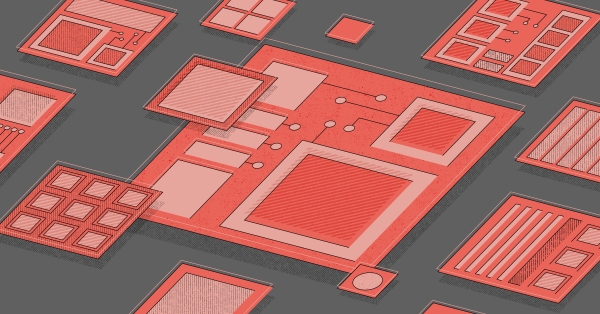Why Cores Count! What’s Next for AMD EPYC on Equinix Metal
Why high processor core counts matter for enterprise workloads and our next step with AMD.

AMD has taken an elegant approach to the deceleration of Moore’s Law—limits in chip process technology that have started to show in recent years as we race to atom-sized etchings on silicon wafers. Instead of trying to cram ever more, ever tinier transistors onto a single silicon die, AMD based its blockbuster EPYC™ server processors on a “chiplet architecture.” This enables the company to produce high-performance x86 processors with very high core counts at super-efficient manufacturing yields.
Here’s why we think that matters and why we are excited to take the next step in our long relationship with AMD.
Getting Around Moore’s Law
So, what’s the story with Moore’s Law?
In short, individual silicon transistors are now so small (the size of molecules!) that it is becoming impractical to cram more and more of them onto a single chip. As an industry, we’re facing three distinct challenges:
- The technical difficulty and expense of building submolecular parts
- Controlling the electrical current running through transistors so tightly packed
- Effectively dissipating the heat created by such power density
AMD essentially liberated itself from the confines of the monolithic die by replacing it with multiple chiplets, each based on a die that’s about 200 square millimeters in size—monolithic chips in the same class that these chiplet-based ones are can reach 800 square millimeters.
This enables AMD to put more cores in a single CPU package without relying solely on shrinking transistors and all the related physical complications. For example, heat dissipation is easier with a chiplet design because the heat is spread more evenly across the processor.
Why More Cores?
Look across the silicon landscape and you’ll notice that core counts are growing. This is especially true in the server market, increasingly defined by the large-scale workloads of the public clouds. High core counts are one of the reasons we feel Arm servers are now finally gaining momentum. But even in consumer marketing, such as with Apple’s iPhone, the number of cores, their efficiency, and their purpose are at the top of each sell sheet.
Public cloud providers rely upon fleets of high-core-count machines to provide zillions of virtual machines and containers in a multi-tenant environment. Cramming more high-performance cores per machine enables them to wring out enormous efficiencies at scale.
We’re pursuing the same benefit at Equinix Metal, but with one important difference: it’s our customers (not us) that are looking to create dense, efficient, multitenant environments. That’s why we only offer dedicated, single-tenant hardware: so our customers can wring out all of the benefits for their specific use cases.
Dedicated means our customers avoid noisy neighbor issues that are common in multitenant environments. That generally means better performance and a more focused security stance. Combining high-core-count processors with a large number of memory and PCIe channels allows for dense hyperconverged systems that really excel on price-to-performance metrics.
Our AMD Lineage
Equinix Metal has long offered AMD-based server configurations. In fact, we were one of the first providers in the world to launch systems based on EPYC processors.
Our current AMD-based configs (the c3.medium.x86 and m3.large.x86) are based on the second-generation EPYC processors, codenamed “Rome,” and have been true best sellers. The former instance is powered by a 24-core CPU and the latter by a 32-core part. We’re now updating our AMD lineup with the third-generation EPYC processors, codenamed “Milan,” including a new instance that will feature as many as 64 cores in a single socket.
Under the hood, it’s more than just dropping in a new chip. Similar to our current lineup, we’re investing in both standard OEM form factors (we’ve had a long track record of collaboration with Dell and AMD) as well as the open source Open19 form factor that we help to lead at the Linux Foundation.
With Open19’s v2 specification, we’re focused on driving sustainability benefits that include “plug-and-play” liquid cooling and native 48-volt shared high-efficiency power shelves. We plan to leverage both in our upcoming 64-core, 128-thread 3rd Gen EPYC processor-powered server, a virtualization monster designed for network-heavy and cloud native workloads.
Finally, we’re working with various partners to certify our AMD servers for common enterprise applications. For example, we recently certified the Nutanix Cloud Platform, helping to make the promise of hybrid cloud a reality for customers big and small.
If you have ideas or suggestions for how we can better enable the innovation horsepower of AMD here at Equinix, drop us a line or suggestion on our Feedback board. We’d love to hear from you!

Ready to kick the tires?
Use code DEPLOYNOW for $300 credit